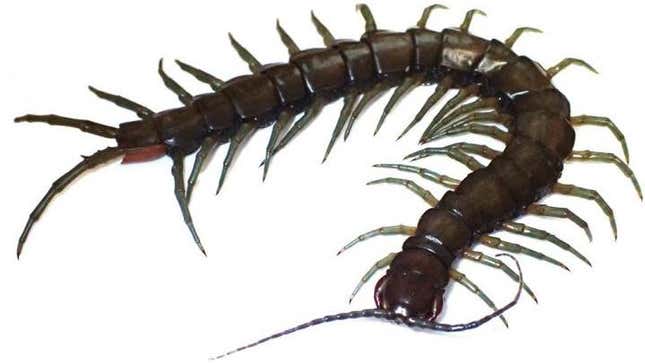
Creepy, crawly, newly discovered. The latest critter to emerge from the Japanese archipelago is an 8-inch-long, 1-inch-wide centipede, the first to be identified in Japan in nearly 150 years.
A paper about the animal was published this month in the journal Zootaxa. It lives in the Ryukyu island chain, which stretches from southwestern Japan to Taiwan. A team of Japanese biologists went to study it after hearing reports of an unknown centipede species attacking giant freshwater prawns, rat-sized shrimp that dwell in the streams and rivers of southeast Asia. Because of course.
The many-legged arthropod is only the third amphibious centipede from the group Scolopendra, a genus of about 100 known species, to be classified. The team distinguished this animal from other members of the genus in the area through a genetic analysis.
It’s not the largest of Scolopendra—that honor belongs to the aptly named Scolopendra gigantea, a South American centipede that can grow to nearly a foot long. Though, when dealing with such creatures, perhaps a few inches doesn’t really change how you feel about the thing. Others of the genus are known to be venomous, with fangs that deliver a painful bite. But study authors haven’t had a chance to figure out whether this new species is venomous just yet.
Centipedes, with their plate-like exoskeletons, don’t particularly resemble other amphibians like frogs and salamanders. But swimming is a useful adaptation to these hungry, hungry centipedes, which writhe through the water like Bionicle sea snakes. Previous research has looked into how the animals send different messages through their body to command their many legs to engage in walking or swimming mechanics, suggesting that the different body segments recognize and handle aquatic and terrestrial environments with ease.
The animal was found both on Okinawa, the Japanese island, and Taiwan itself. The researchers believe the centipede is endangered, which, in conjunction with its remote habitat, may explain how it evaded human detection for so long. Frankly, that’s not a bad thing. I don’t want this centipede anywhere near me.